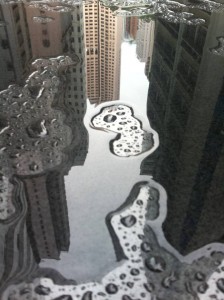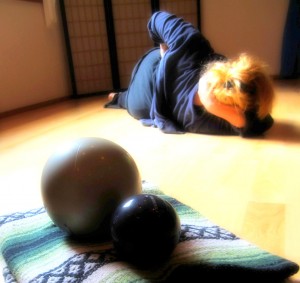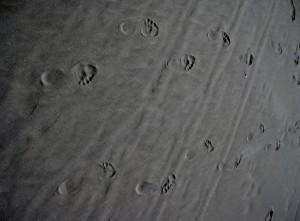We are encouraged to perform at a high level, overcome our weaknesses and to achieve with a big “A”. Using our intuition is discouraged and as a result many of us become scared or even ashamed of our pains and tensions. They become obstacles we have to overcome. When we come across people who seem to achieve effortlessly, we naturally start comparing ourselves. Do we want to push ourselves harder? Do we fight or do we give up? Exhaustion is around the corner.
Do you find that you do not put enough time in your schedule to relax? Are you constantly rushing to meet deadlines? Do you cram extra meetings into your timetable? Therefore, not creating enough time for your personal interests and making family and friends a second priority. With such a hectic timetable, do you end up becoming sick when things slow down on holidays?
Living such a chaotic lifestyle makes you lose your sense of self and stops you from listening to your body. This can manifest into aches and pains in your body and your mind becoming restless. Are you familiar with this spiral?
A well-balanced person will save his/her energy and restore him/herself to keep going in the long run. Sometimes, it means letting go of something, or resetting priorities.

What if there is a soft way to push? In Somatics we study the mechanics of effective movement, in the body and in life.
Movement can be considered in the context of five fundamental actions (1) yielding, (2) pushing, (3) reaching, (4) holding, and (5) pulling. Any movement can be seen as a variation or combination of these basic actions.
Susan Aposhyan, M.A., L.P.C., (former director of the Somatic Psychology Department at Naropa University, and author of Natural Intelligence: Body-Mind Integration and Human Development, 1999, Lippincott, Williams & Wilkins and Body-Mind Psychotherapy, 2004) describes the actions, as outlined below:
Yielding is a quality of resting in contact with the environment and underlies our basic relationship to the world. It i s about the state of being versus doing, and forms the basis for the ability to act effectively in the world. In being in contact with the environment, discernment can be developed as to whether push, reach, or pull is desired or appropriate.
s about the state of being versus doing, and forms the basis for the ability to act effectively in the world. In being in contact with the environment, discernment can be developed as to whether push, reach, or pull is desired or appropriate.
You can find it when you exhale, enjoying the sensation of your body weight.
Pushing separates oneself from the immediate environment. The action contracts (shortens) all the musculature around the pushing limb resulting in the body becoming denser and more substantial. This action supports the capacity to psychologically feel, establish, and maintain boundaries, thus promoting an internal sense of support. It also supports the process of individuation and confidence building.
Once we tune into the supportive YIELD, there is an impulse to move. A somatic principle is that support precedes movement.
Reaching is an action that supports going beyond the sense of self. It is a way of extending out towards others or towards objects. Psychologically, reaching manifests curiosity, desire, longing, and compassion. This action may, however, expose one to risk taking and a sense of vulnerability.
Where do you come from, and where do you intend to go? Reach is a quality that gives lightness to the push.
Holding and Pulling allows for reaching out into the environment towards something/someone desirable and bringing it closer to oneself. Psychologically, the ability to hold and pull depends on the capacity to yield, push and reach. These actions provide the opportunity to reach out and take in from the external space.
You pull yourself toward the object of desire, or away from the unwanted, rather than grabbing with strength, or pushing away.
This cycle is also called “the cycle of satisfaction”. When embodied, it becomes the tonus of our personality. We find a satisfying flow if every action.
When finding myself stuck, I like to play with the idea of feeling the call for movement into life and where am I feeling more stable and best supported.
Rather than pushing through an activity as a way of being mindful, try taking a long exhale and some time to connect to your body weight. Then ask your heart and remind yourself why you are doing acitivity? Where is the call for this action in your life? You may notice physical expansiveness and refreshed brain. You may feel the need to powernap, this is fine!
In TCM, the secret to health is circulation of KI (Qi or energy) within your body and nonetheless between yourself and your environment. Yield, the support of push, is found in the Earth. Whatever a human being does he/she is connected and depending on the gravitational pull of the earth. This connection is how the” body brain”, the proprioceptors (in the joints, in the muscles) finds the right amount of tension, and strength, as well as proper alignment.
Tight muscles are often paired with a lost connection to the Earth, overwhelming emotions and a sense of being “ungrounded”.
I often guide clients to find the support of the earth (yield). It awakens and engages their core to periphery nerve pathways, the shift happens very quickly. The result is a sense of rest, space and length in the body. And with an intrinsic sense of effortlessness that comes from having and heeding well-calibrated sensory-motor feedback. This has proven very insightful for their yoga practice too.
As the Foundation for Movement Intelligence explains “We rely on the human organism’s ability to organize itself “organically” — elegantly and in its entirety, with spontaneously coordinated harmony — for optimal efficiency, maximal efficacy, and pleasurable, sustainable living”. In line with the latest research on neuroplasticity,
This helps us lead an effortlessly successful life!
Namaste,
Anne